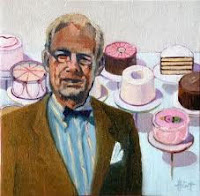Fauvist Self Portrait Inspired By Von Werefkin

I am always searching for interesting ways for students to create a self portrait. I found a fauvist/expressionist artist Marianne von Werefkin (1860-1938) as perfect inspiration. She was born in Russia, she studied in St Petersburg and Moscow. She came Munich and soon belonged to the circle around Kandinsky and Der Blaue Reiter. She had contact with the Fauves and her portraits are among the most succinct of this style. Fauvism emphasizes emotion rather than intellect and color instead of form, it attempts to externalize what’s internal. In our lesson we are inspired by von Werefkin fauvist self portrait. We focus on creating a real self portrait using unreal colors and space. Materials: Mirror, sketching pencils, and oil pastels or acrylic ink Step #1: Draw light guideline down the center and across the middle of your paper. Use a hand mirror or any mirror and draw the shape of your head Step #2: Draw your eyes, nose, and mouth. Step #3: Draw ears, neck and hai


